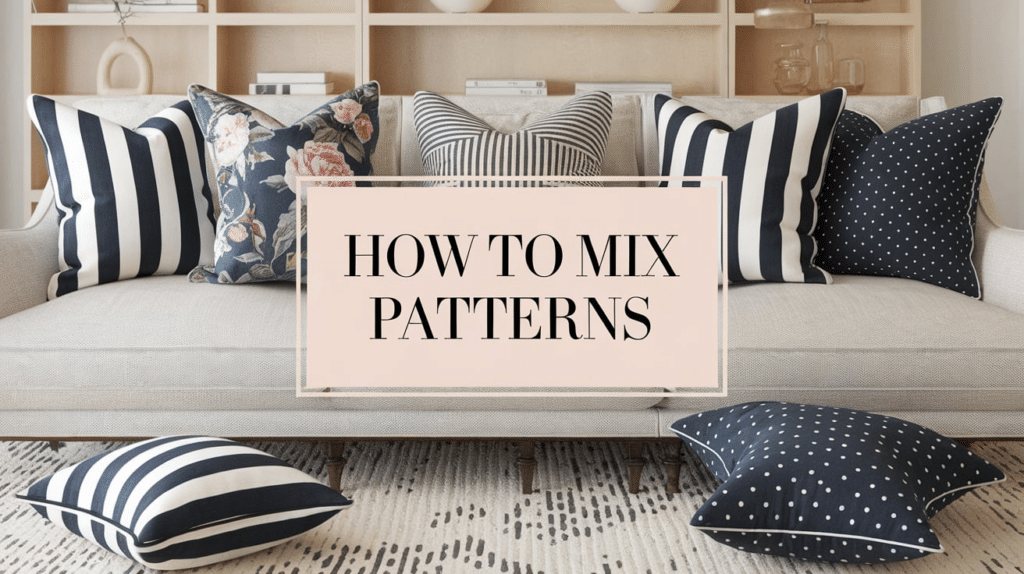Mixing patterns used to scare me. I thought it would look too busy or not match. But once I learned a few simple tips, it became a lot easier and more fun. Now, I love using stripes with florals or checks with dots.
It adds color, texture, and personality to any space. You don’t need to be a design expert to make it work. You need to know a few rules that keep things balanced. In this blog, I’ll walk you through how to mix patterns the easy way.
I’ll share what works for me, what to avoid, and how to make it all come together. If you’ve ever looked at a room or outfit and thought, “I could never pull that off,” I’m here to say—you can. Let’s break it down and make pattern mixing simple.
What Is a Pattern?
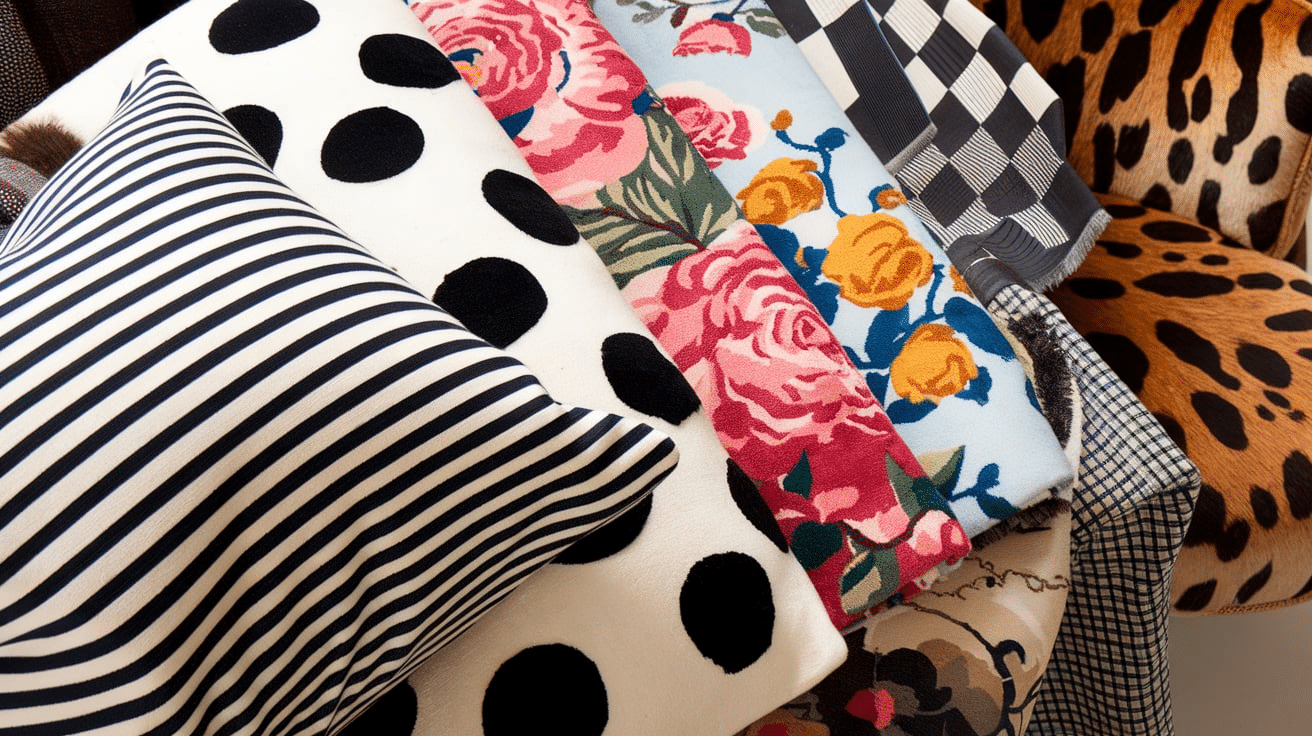
A pattern is any design that repeats itself. It can be made of shapes, lines, pictures, or colors. Patterns are everywhere—in clothes, pillows, curtains, rugs, and even dishes. Some patterns are very simple, like stripes or dots. Others are more detailed, like floral prints or geometric shapes.
You might already use patterns without thinking about it. For example, your favorite shirt might have tiny flowers on it. Or your living room rug might have a repeating diamond shape. These are all patterns, and when you put more than one together, you’re mixing them.
The key is learning how to mix them in a way that feels good and looks nice. When it’s done right, the result can feel cozy, stylish, or even fun. And the good news? You don’t need to know fancy design terms or follow hard rules. You need to understand a few simple ideas.
Why Mix Patterns?
Patterns bring energy and movement to a space. Even if the colors are nice, a solid-colored room or outfit can feel plain. But when you add a few patterns, it feels more alive. Patterns create depth and interest, making people want to look around and take in the details.
Mixing patterns also gives your space or look a personal touch. You get to choose the colors, shapes, and styles that reflect your taste. One person might love mixing bright florals with stripes, while another might prefer soft dots with pale checks. Both can look beautiful—just in different ways.
How to Mix Patterns Step by Step
Mixing patterns is easy when you take it one step at a time. Start small, follow simple rules, and build your confidence as you go.
1. Start with One Pattern You Love
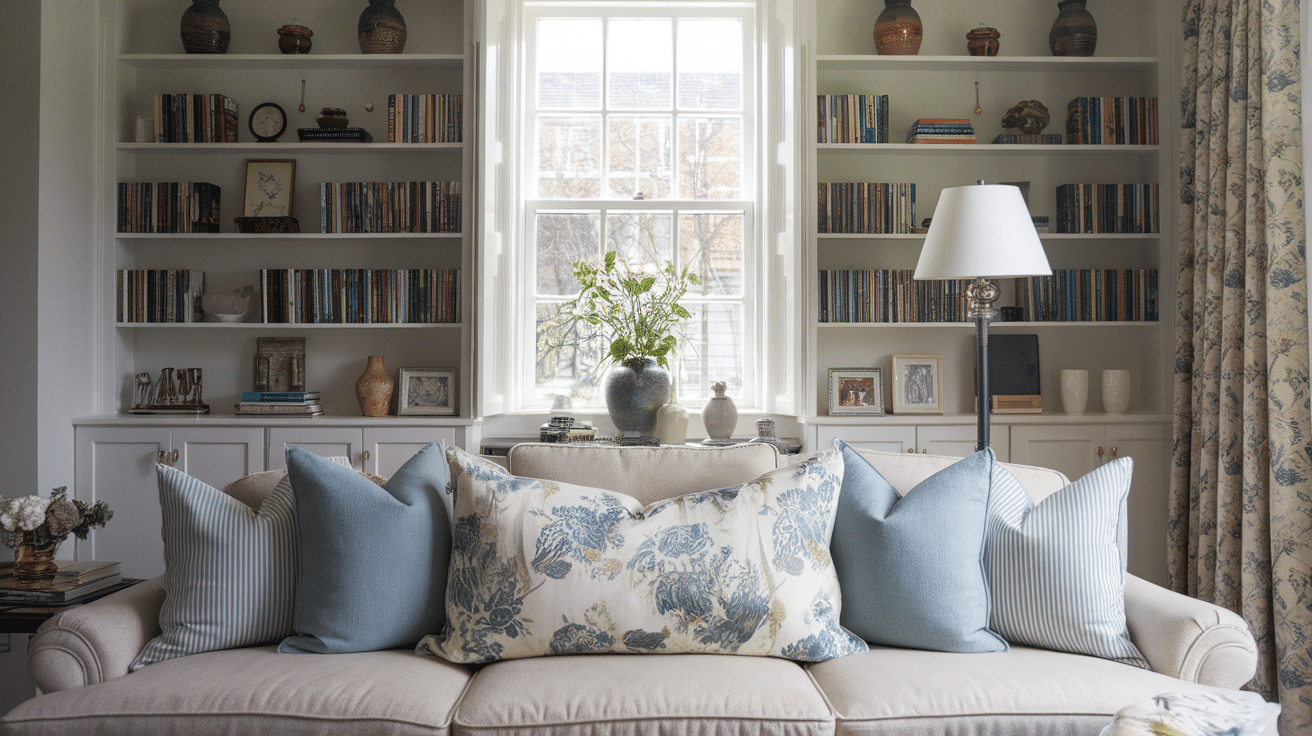
When you’re new to pattern mixing, it’s smart to start with just one pattern you really like. This will be your base. It could be anything—a floral pillow, a striped rug, or a patterned shirt. The important thing is that you love how it looks and feel confident using it.
Once you pick your base pattern, please take a closer look at the colors in it. If it’s a floral pillow, maybe it has soft pinks and greens. If it’s a striped rug, perhaps it’s navy blue and white. These colors will guide your next choices. You don’t have to match them perfectly, but it helps to stay in the same family of colors.
2. Add a Second Pattern That Feels Different
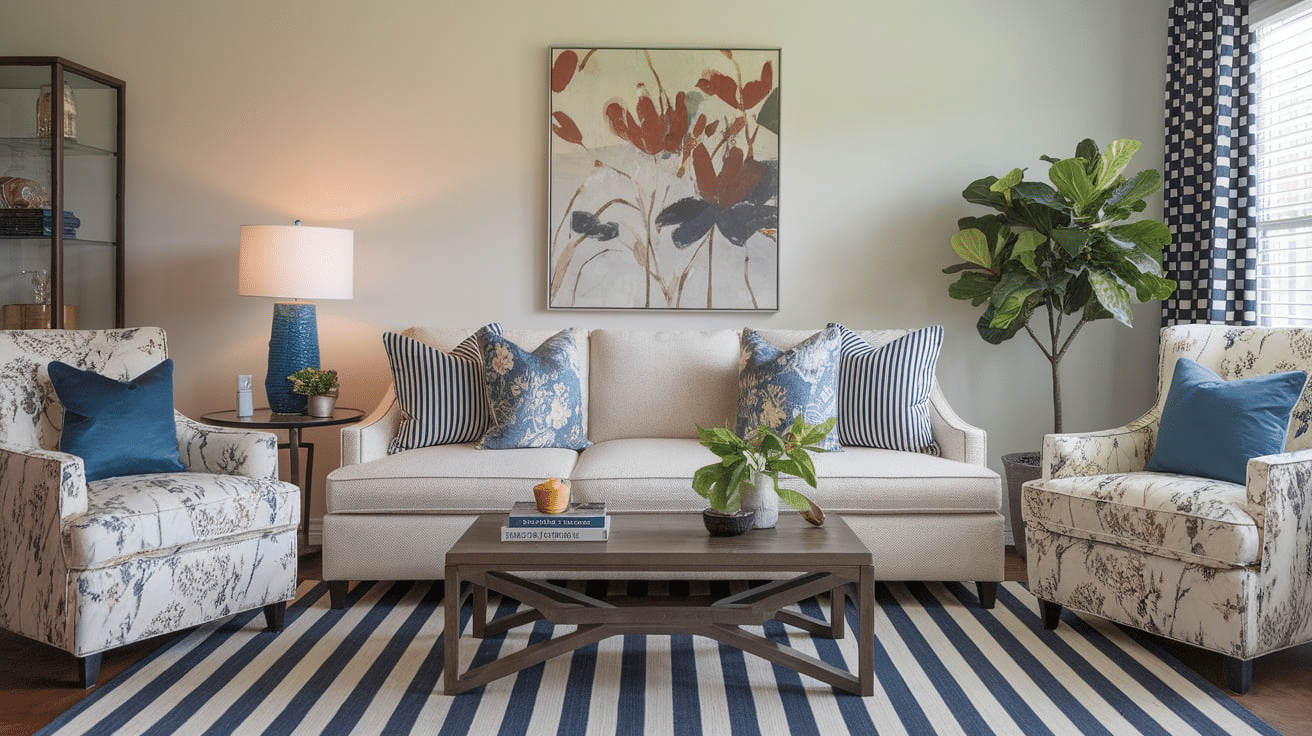
Now, it’s time to add a second pattern. Many people feel stuck here, but it doesn’t have to be hard. The trick is to choose a pattern that’s different in shape or style from the first one but still shares some colors.
For example, if your first pattern is floral and has big, round shapes, try something like stripes or checks for your second pattern. These have straight lines, so they give a nice contrast.
If your first pattern is full of tiny shapes, look for a second one with bigger designs. Playing with scale—the size of the pattern—keeps things balanced and helps each pattern stand out without fighting for attention.
3. Use Color to Keep Things Together
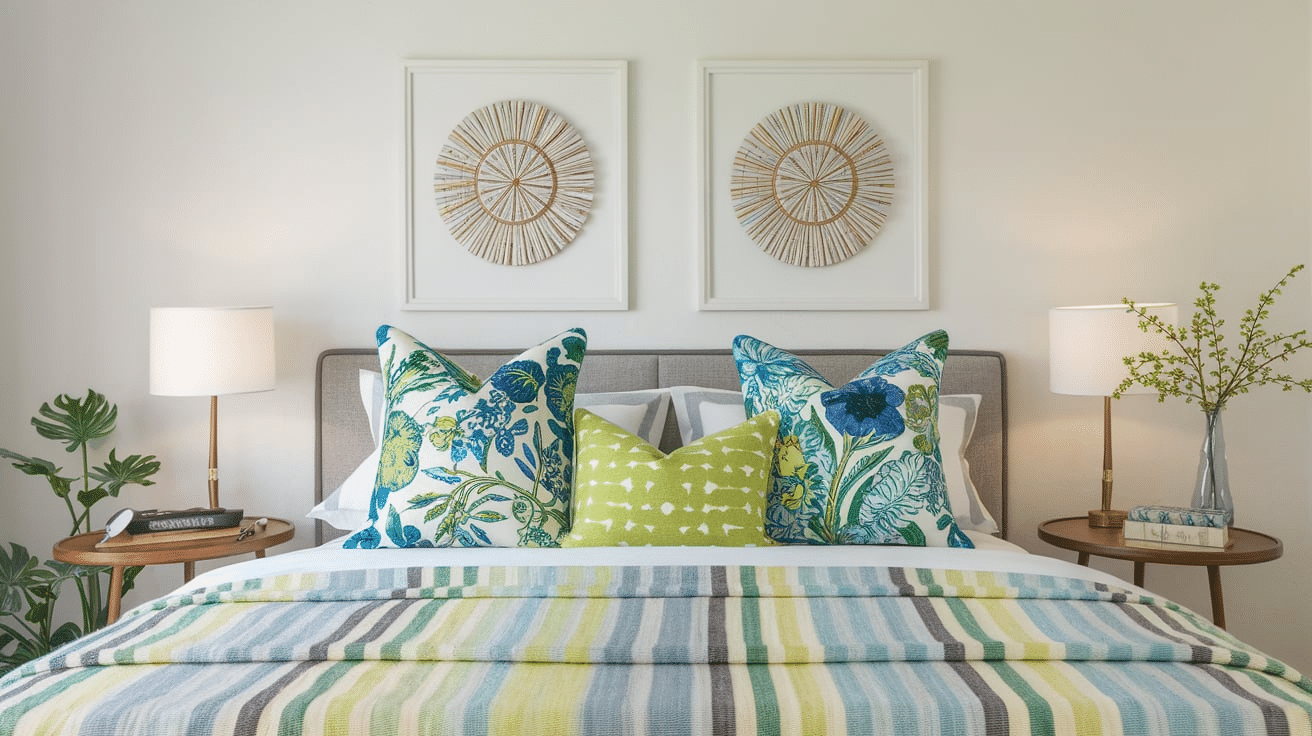
Color is one of the most important things when mixing patterns. If the colors go well together, the patterns will almost always look good, too—even if the shapes are very different.
You don’t have to pick patterns that use all the same colors. But it helps to have at least one or two colors in common. This creates a sense of flow.
For example, if you’re mixing a navy and white striped blanket with a floral pillow, it works well if the pillow also has some navy in the flowers or leaves. This shared color pulls the two patterns together and makes them feel like part of the same story.
4. Try Mixing Three Patterns (If You’re Ready)
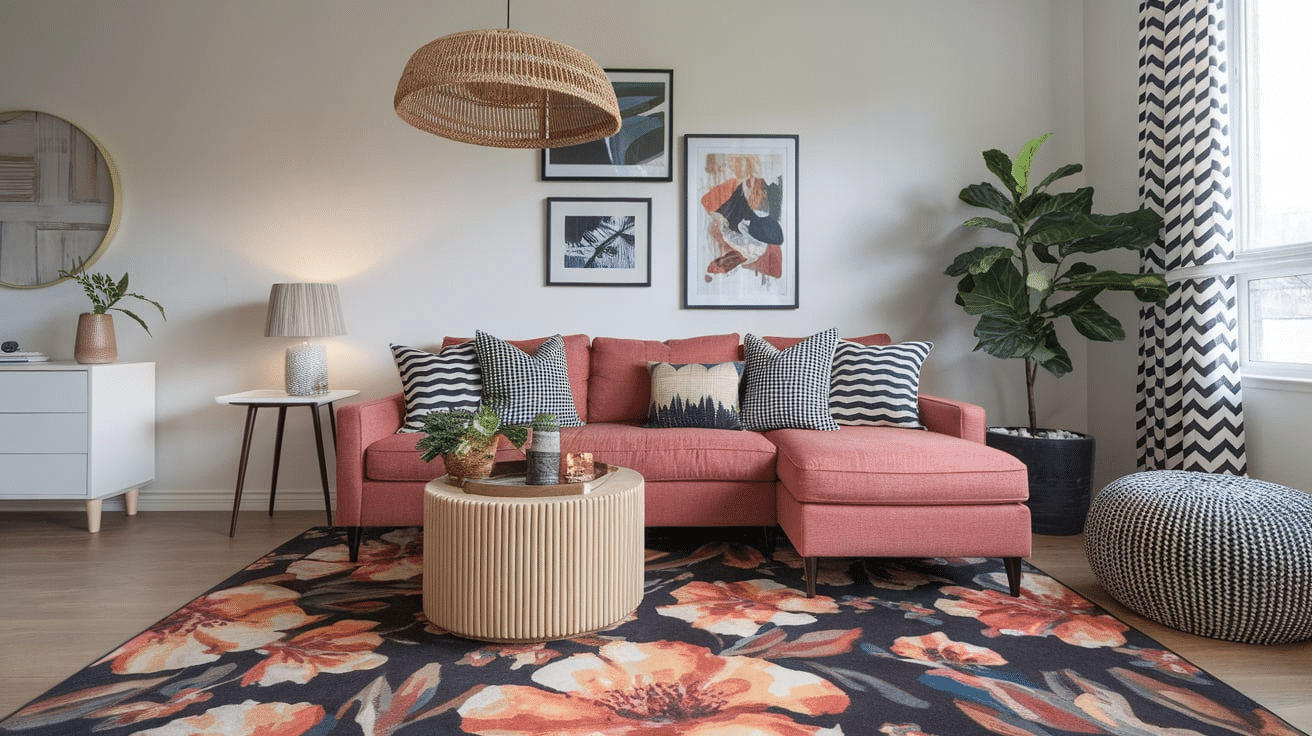
Once you’re comfortable mixing two patterns, you might want to try a third. This can make the space or outfit feel even more layered and interesting. But adding more patterns means you’ll need to be careful with balance.
When mixing three patterns, it’s helpful to think in terms of size. Choose one large pattern (like big flowers), one medium pattern (like mid-size stripes), and one small pattern (like tiny dots). Keeping the sizes different helps them stand out instead of blending into one another.
If you’re decorating a living room, you might use a large-patterned rug, medium-patterned pillows, and a small-patterned throw blanket. In an outfit, you might wear a skirt with big polka dots, a top with small stripes, and a scarf with a soft floral print. As long as the colors tie everything together, the mix will look thoughtful, not random.
5. Give Your Eyes a Break with Solids
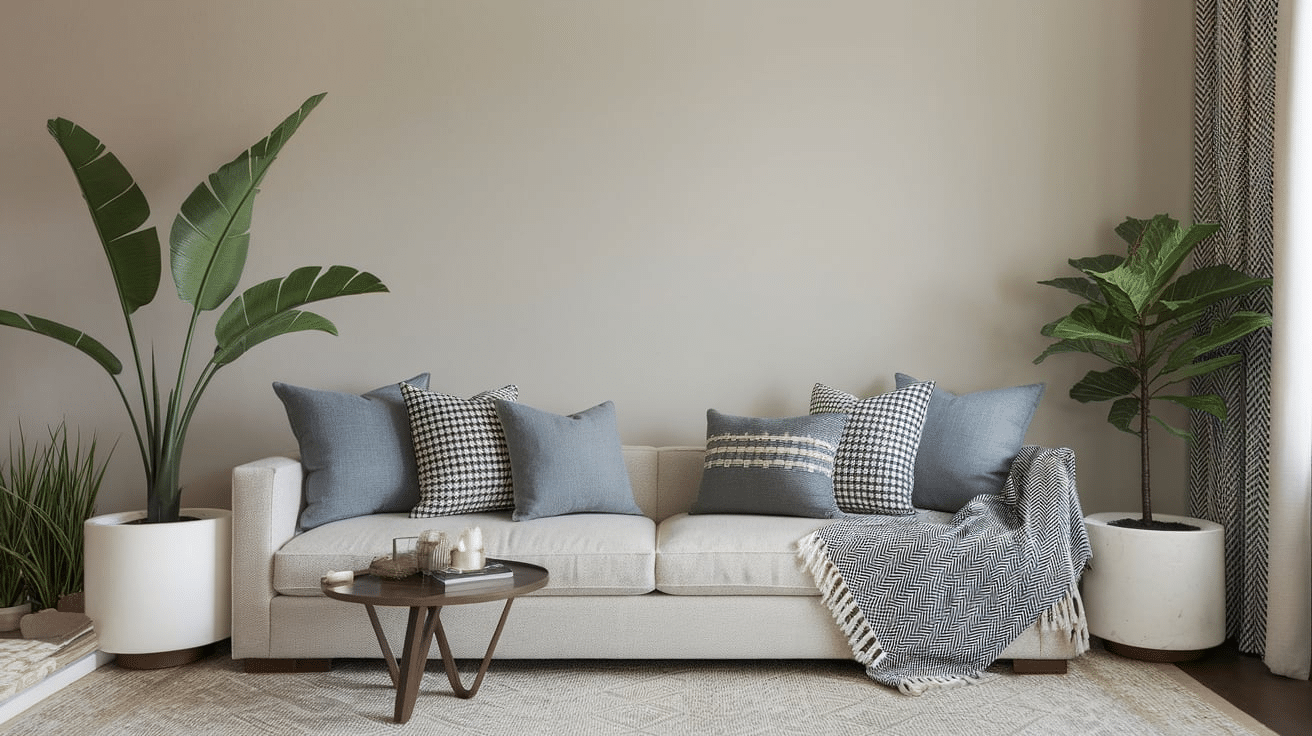
Too many patterns in one place can feel like too much. That’s why it’s important to mix in solid colors. Solids give your eyes a place to rest. They also help the patterns stand out more because they’re not competing for attention.
You can use solids in lots of ways. In your home, this might mean a plain white or beige couch between patterned pillows. In your clothes, it could mean wearing solid jeans or a simple jacket over patterned pieces. Think of solids as the glue that holds everything together. They keep things from feeling too loud or busy.
6. Don’t Forget About Texture
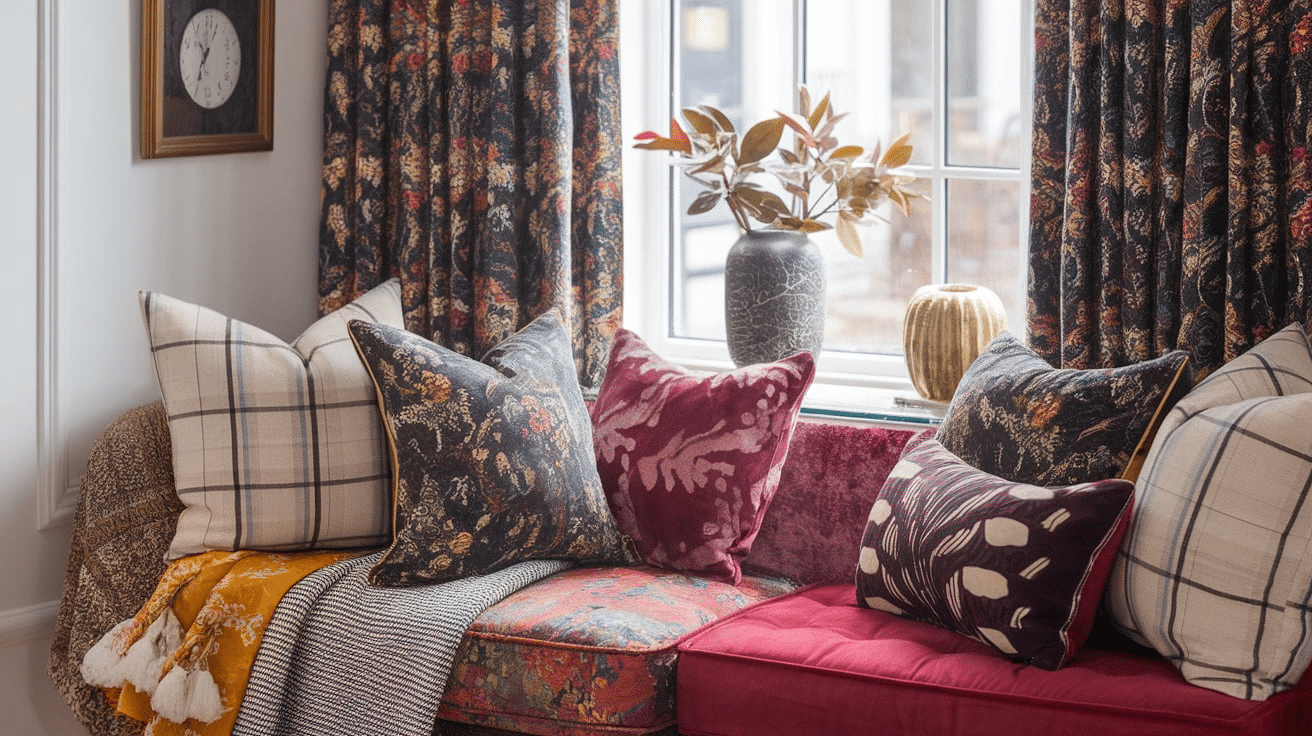
People often forget about texture when mixing patterns, but it plays an important role. Texture means how something feels and looks—like soft velvet, rough linen, smooth leather, or chunky knit. Even if something is a solid color, its texture can still give it a pattern-like feel.
When you mix different textures, you add depth and interest without needing to add more prints. A fuzzy blanket next to a smooth cotton pillow creates a contrast that feels rich and cozy. In clothing, a denim jacket over a soft floral dress does the same thing. It’s another way to bring life into your look or space without adding too much.
7. Repeat Colors to Tie Everything Together
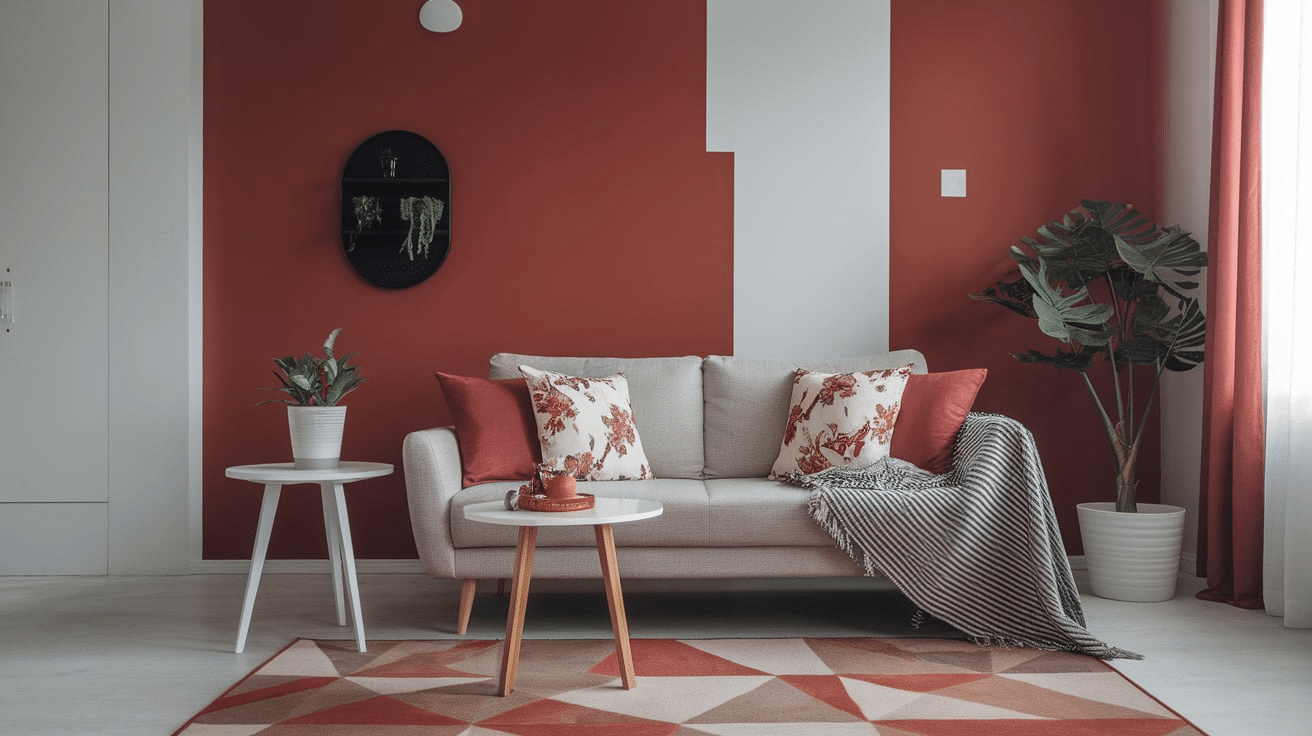
A simple way to make all your patterns work together is to repeat the same colors throughout. If you have a patterned pillow with green in it, try adding another pattern somewhere else that uses the same shade of green. This makes the patterns feel like they belong together, even if their shapes are totally different.
Repeating colors creates flow. It helps your eye move around the room (or the outfit) without feeling confused or overwhelmed. It also makes the space feel calm and put together, even with many patterns involved.
Mix Patterns by Room
Let’s look at a few common rooms and how you can mix patterns in each:
In the Living Room
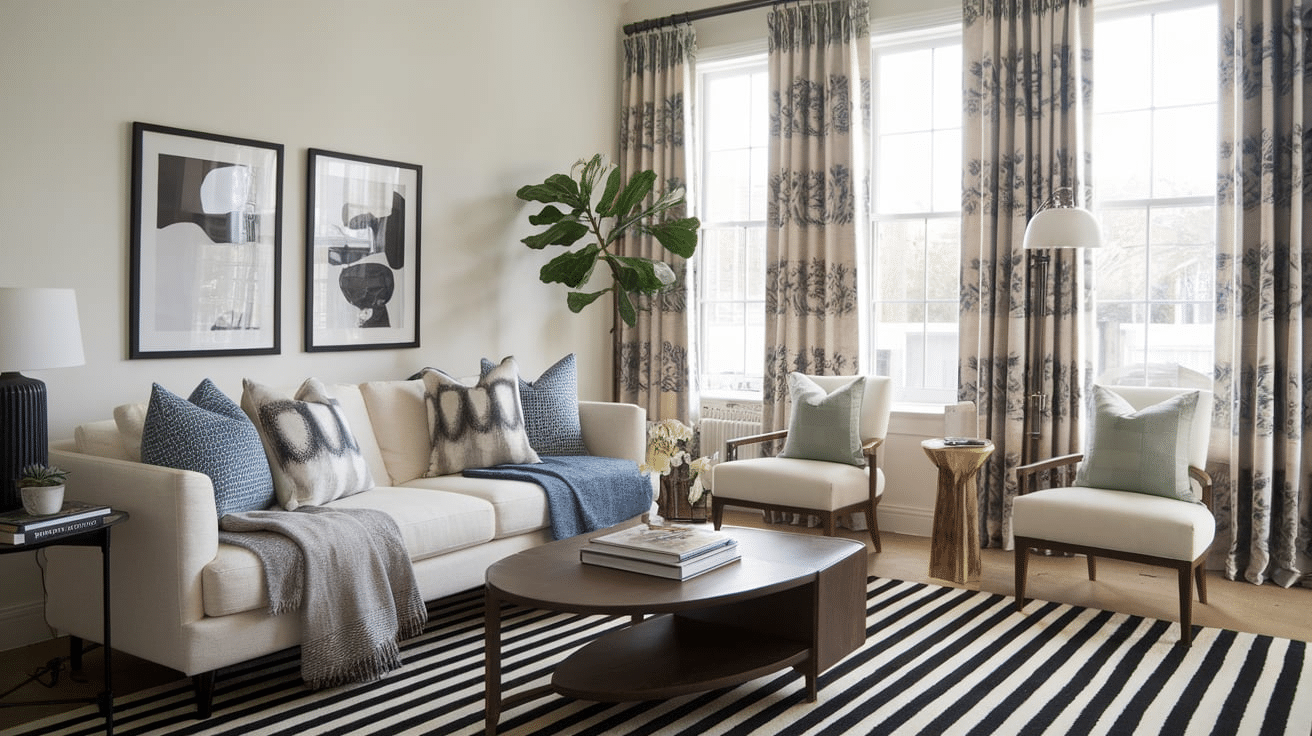
The living room is a great place to play with patterns. You can use them on the couch, curtains, rug, or wall art. Try starting with two or three patterned pillows. Mix something bold like stripes with something soft like floral or watercolor prints. If your rug already has a pattern, keep the couch simple, but add a patterned throw.
In the Bedroom
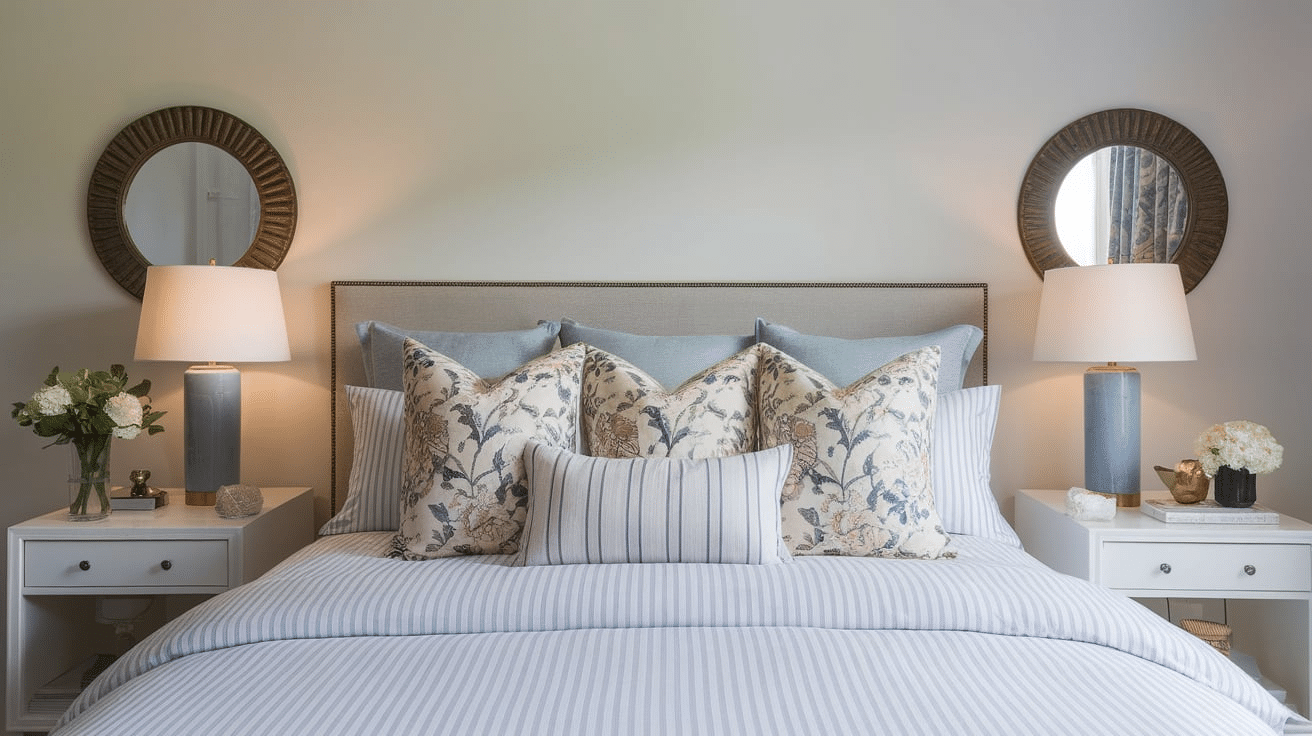
Your bed is the perfect place to layer patterns. Start with a patterned duvet cover, then add sheets with a different but smaller pattern. Try mixing polka dots with stripes or florals with checks. Add a solid throw blanket or neutral pillows to balance it out.
In the Kitchen or Dining Room
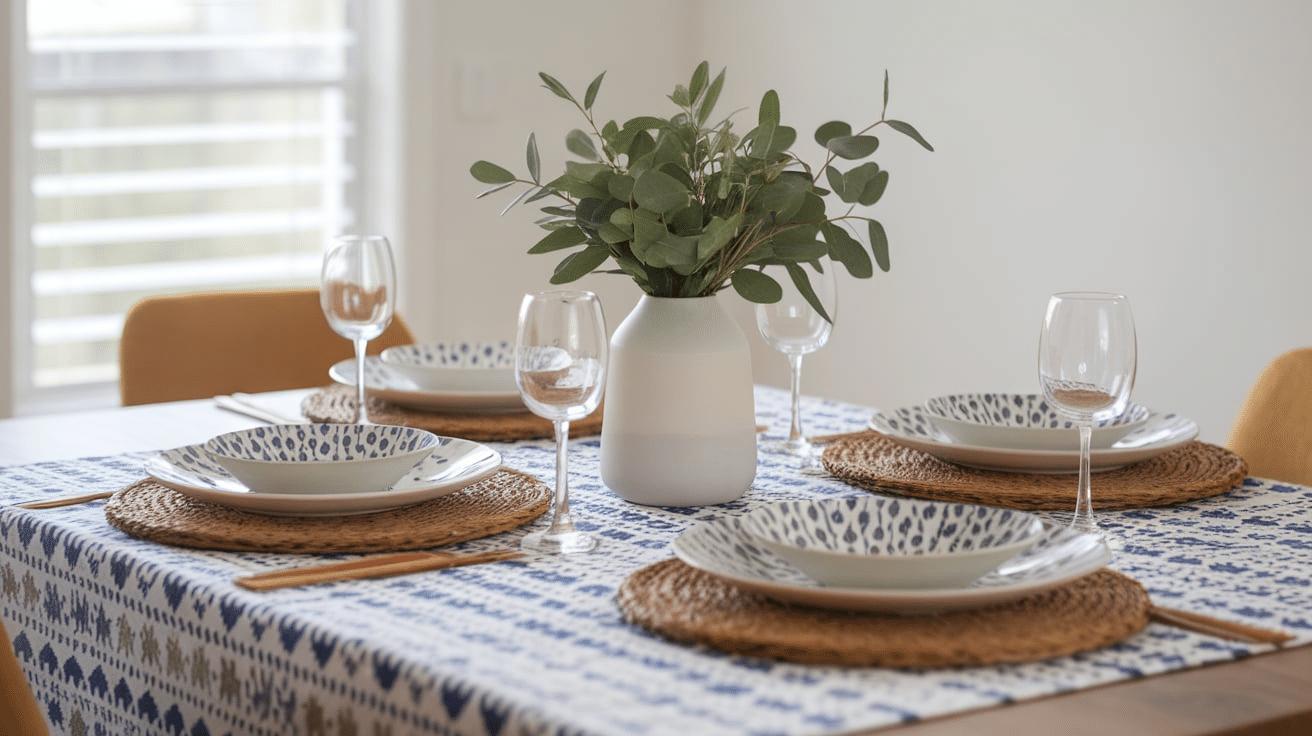
In these rooms, patterns can be used on tablecloths, napkins, dishware, and even backsplashes. Please keep it simple by using a bold print on the table and smaller, quieter patterns on the dishes. Repeating one or two colors keeps everything looking tied together.
Easy Pattern Combos That Always Work
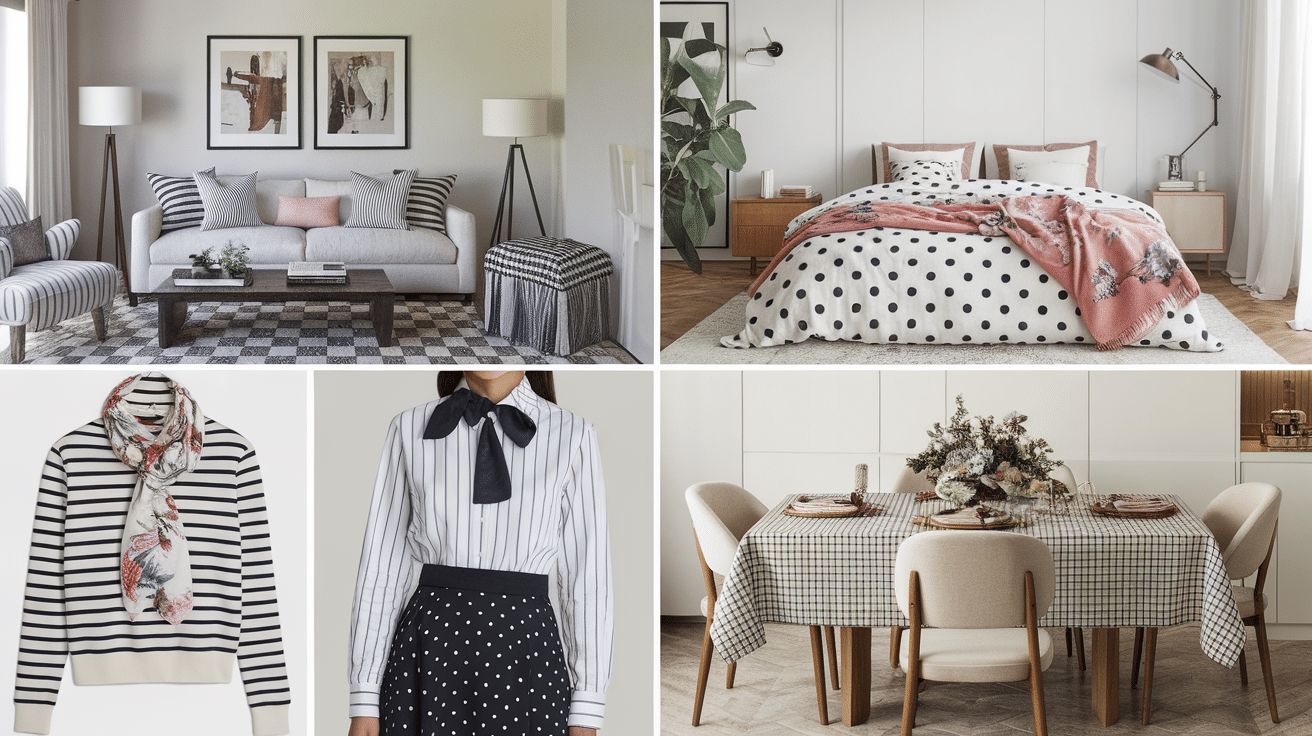
If you’re new to mixing patterns, these combinations are a great place to start. They’re simple, safe, and almost always look good when you use the same color family or repeat a color throughout.
1. Stripes and Florals
Stripes are neat and straight, while flowers are soft and flowing. When you combine them, they balance each other out. For example, try a striped pillow with a floral one in the same colors or a striped shirt with a floral scarf. This mix works because the shapes are different, but the colors can pull them together.
2. Checks and Polka Dots
Checks and dots are both simple, easy-to-spot patterns. They won’t fight for attention. To keep it calm, choose soft or small dots with medium-sized checks. For example, a dot-patterned tablecloth with checkered napkins works well for a dining room setup.
3. Large Print with Small Print
Mixing patterns of different sizes is one of the best tricks. A large pattern stands out, while a small one adds detail without being too loud. Try a rug with big shapes and a small, dotted, or lightly patterned pillow. In outfits, wear a skirt with large flowers and a top with tiny stripes.
4. Stripes and Polka Dots
This combo is playful and fun. It works great in kids’ rooms, casual outfits, or relaxed living areas. Try to keep the colors similar—like black and white or blue and gray—so it doesn’t feel too wild.
5. Geometric and Organic Prints
Geometric patterns have straight lines and sharp edges, like triangles or diamonds. Organic prints, like florals or watercolor shapes, are soft and flowing. Mixing these creates a fun contrast. For example, a geometric curtain next to a floral chair can feel both modern and cozy.
6. Animal Prints with Solids or Stripes
Animal prints like leopard or zebra are bold and stylish. They pair best with solid colors or simple stripes. For example, a leopard print pillow on a striped chair looks cool and trendy, especially if they share one or two colors.
7. Tone-on-Tone Patterns
A tone-on-tone pattern means it uses just one color in different shades. For example, light gray stripes on dark gray. These are easy to mix because they aren’t too loud. Try layering different tone-on-tone prints in the same color family for a rich but soft look.
Pattern Mixing Mistakes to Avoid
Mixing patterns can be fun, but it’s easy to make a few mistakes along the way. The good news is that most of them are simple to fix. Here are the most common pattern mixing errors and how to avoid them.
- Using Too Many Bold Patterns: If everything is big and bright, your space or outfit can feel too loud. Please stick to one bold pattern and pair it with simpler or smaller ones to keep things balanced.
- Keeping All Patterns the Same Size: When all your patterns are the same size, they can blend together or feel too strong. Mix large, medium, and small prints so each one stands out.
- Ignoring Color: Patterns should share at least one or two colors. If not, they might clash. Choose prints that feel connected through color, even if their shapes are different.
- Clumping Patterns in One Area: If all your patterns are in one spot, it can feel heavy. Spread them around the room or outfit to create balance and flow.
- Forgetting Solids and Neutrals: Too many patterns without a break can feel busy. Add solid-colored or neutral pieces to calm things down and give the eyes a place to rest.
- Mixing Styles That Don’t Match: Some patterns don’t go together if they’re from very different styles. Try to stay within the same mood—like cozy, modern, or rustic—or connect them with color.
Conclusion
Mixing patterns doesn’t have to be scary or confusing. It just takes a little practice and some easy steps. Start with one pattern you love. Add another that feels different but shares a color or style.
Mix pattern sizes—big, medium, and small. Use solid colors and neutrals to give your eyes a break. Repeat colors to make things feel connected. Remember, texture can act like a pattern, too.
You don’t need to follow every design rule. Sometimes, the best combinations come from just trying things out. If it feels good and looks nice to you, then it works. Trust your eye and take your time. If something looks off, try moving it or swapping it out.
Pattern mixing is a fun way to show your style and bring more life into your space or outfit. So go ahead—try it. Start small and enjoy the process. You’ll get better with each step.

